When I was growing up I was very interested in space. Not just the space race to get to the Moon either. I knew all about the planets and their moons, the stars, galaxies etc. Back then outer space meant empty space, a vacuum, once you were out of Earth’s atmosphere there was really nothing of any interest until you got to the Moon or some other planet.

Even back then things were starting to change however. The Physicist Eugene Parker first proposed the existence of the solar wind in the mid-1950s, a prediction that was confirmed by the first interplanetary space probes in the early 1960s. Now in some ways the solar wind may seem pretty much like a vacuum, it only averages around five protons per cubic centimeter but those few particles are moving at a nominal 500 kilometers per sec generating both a large electric current and a strong magnetic field.

As everyone knows those currents and magnetic fields can interact with the Earth’s own magnetic field to generate both the aurora and occasionally, when a particularly strong solar storm strikes, radio and TV interference and even electrical blackouts. And since the solar wind has been blowing now for four billion years it can have a large effect over time. In fact planetary astronomers now think it was the solar wind that slowly, over millions of years ripped away the atmosphere of Mars.
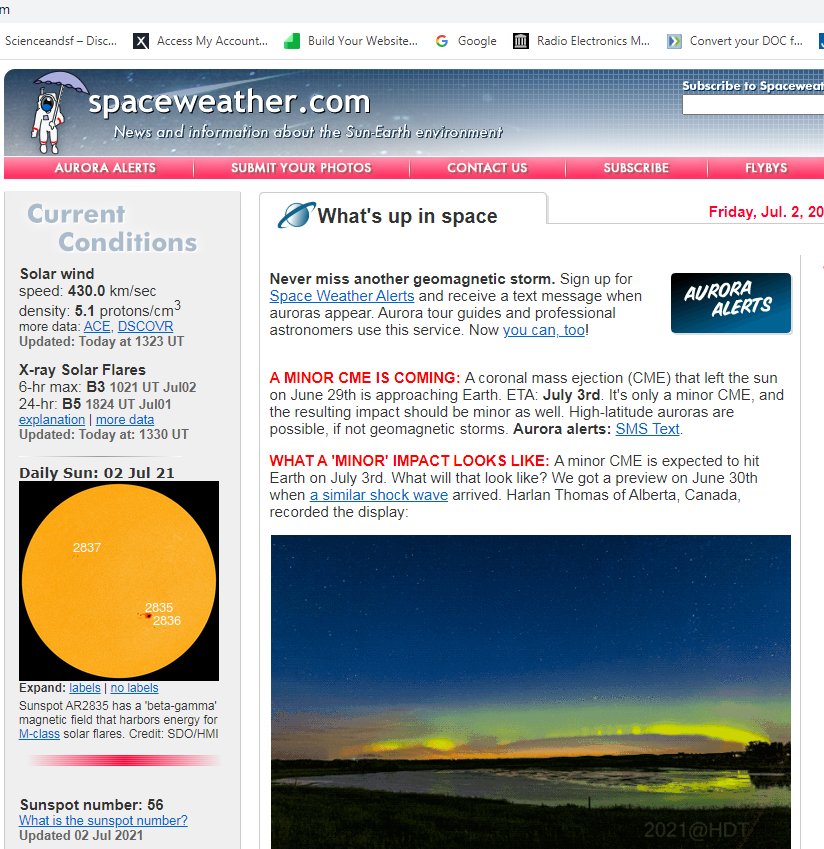
As the solar wind spreads outward from the Sun it disperses slowly, losing strength as it reaches the outer solar system. At a distance about twice as far from the Sun as Neptune’s orbit the solar wind collides with the Interstellar Medium (ISM), the tenuous gas and ionized matter between the stars.

In many way the solar wind and the ISM are very similar. They are both near vacuums by Earthly standards and they are both composed mainly of hydrogen atoms or hydrogen ionized into protons and electrons. The big difference is in the forces pushing on those particles. The solar wind is exploded out from the Sun and carries the Sun’s magnetic field out with it while the ISM moves in response to the magnetic field of the galaxy.

When these two electromagnetic clouds collide with each other they generate a kind of electromagnetic wall that’s millions of kilometers thick known as the Termination Shock. Here the particles of the solar wind lose most of their velocity, they just collided with a wall after all. The particles now drift slowly through what is called the heliosheath, a region of space where the solar wind and the ISM mix. Finally, beyond the heliopause is the ISM proper.
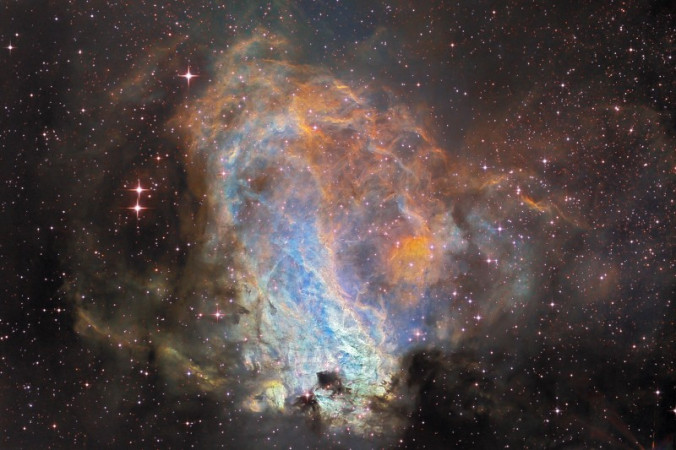
Now the bubble around our solar system formed by the termination shock and the heliosheath is not perfectly spherical. You see our Sun orbits around the center of the galaxy and as it moves both it, and the bubble produced by the solar wind push their way through the ISM. Because of this the bubble is compressed in front of the Sun’s direction of motion and elongated in the rear.
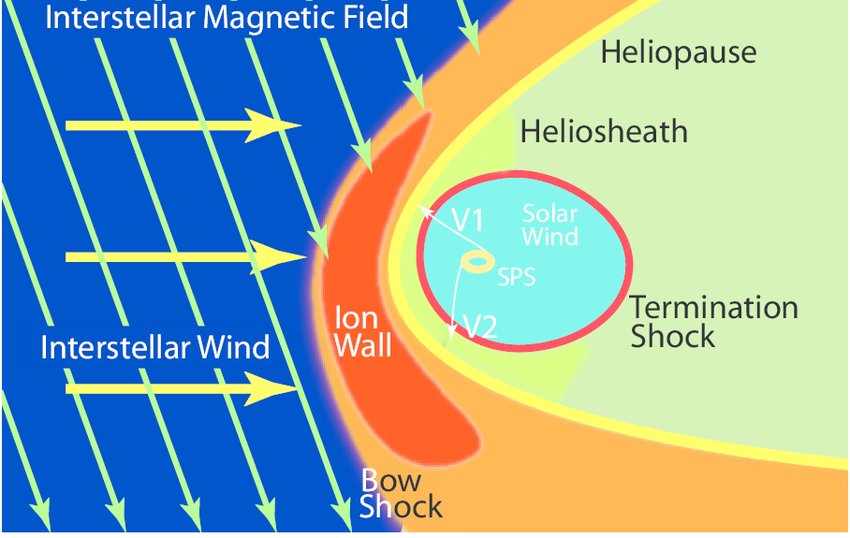
Now you may have noticed that, aside from once saying “At a distance about twice as far from the Sun as Neptune’s orbit” I haven’t been too precise about the distances from the Sun where the termination shock and heliosheath begin and end. Well, that’s because until recently we didn’t have very accurate information on those distances.
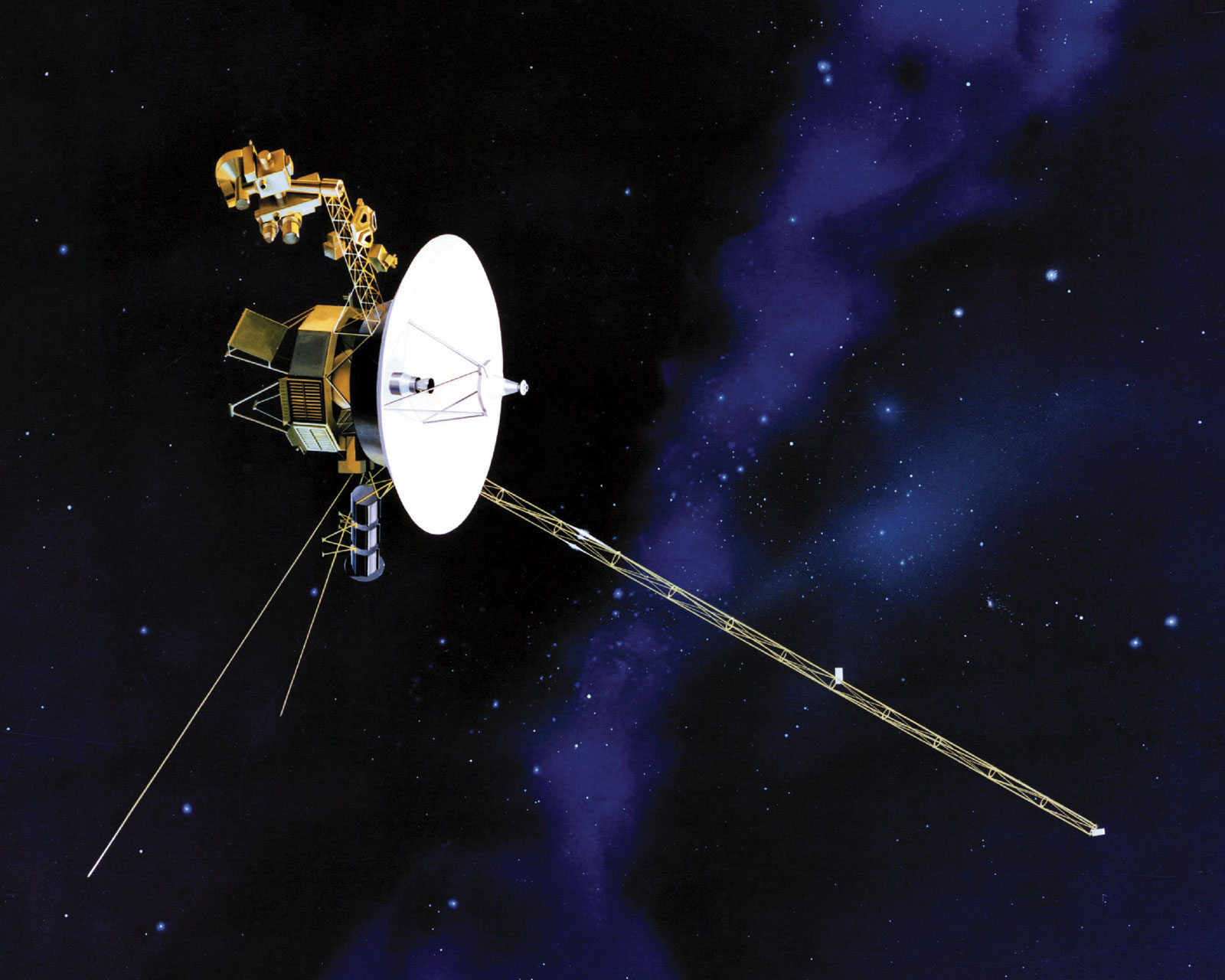
The first accurate measurement came from the Voyager 1 space probe, which is still continuing to send back data on conditions in the space around it 44 years after it’s launch back in 1977. In August of 2012 Voyager 1’s magnetometer saw a rapid shift in the direction of the magnetic field around it. At the same time the number of low energy particles associated with the solar wind dropped while the number of high energy particles considered to be part of the ISM began to increase. Voyager 1 had passed the termination shock and became the first man made object to enter interstellar space.
Voyager 2 followed its sister in November of 2018 giving scientists two data points about the exact size of the bubble formed by the Sun’s solar wind. But with an object that large two data points still leaves a lot unknowns. The scientists wanted more; they wanted a space probe that could measure the distance to the heliopause in many different directions from back here in Earth orbit. The wanted the Interstellar Boundary Explorer or IBEX satellite.
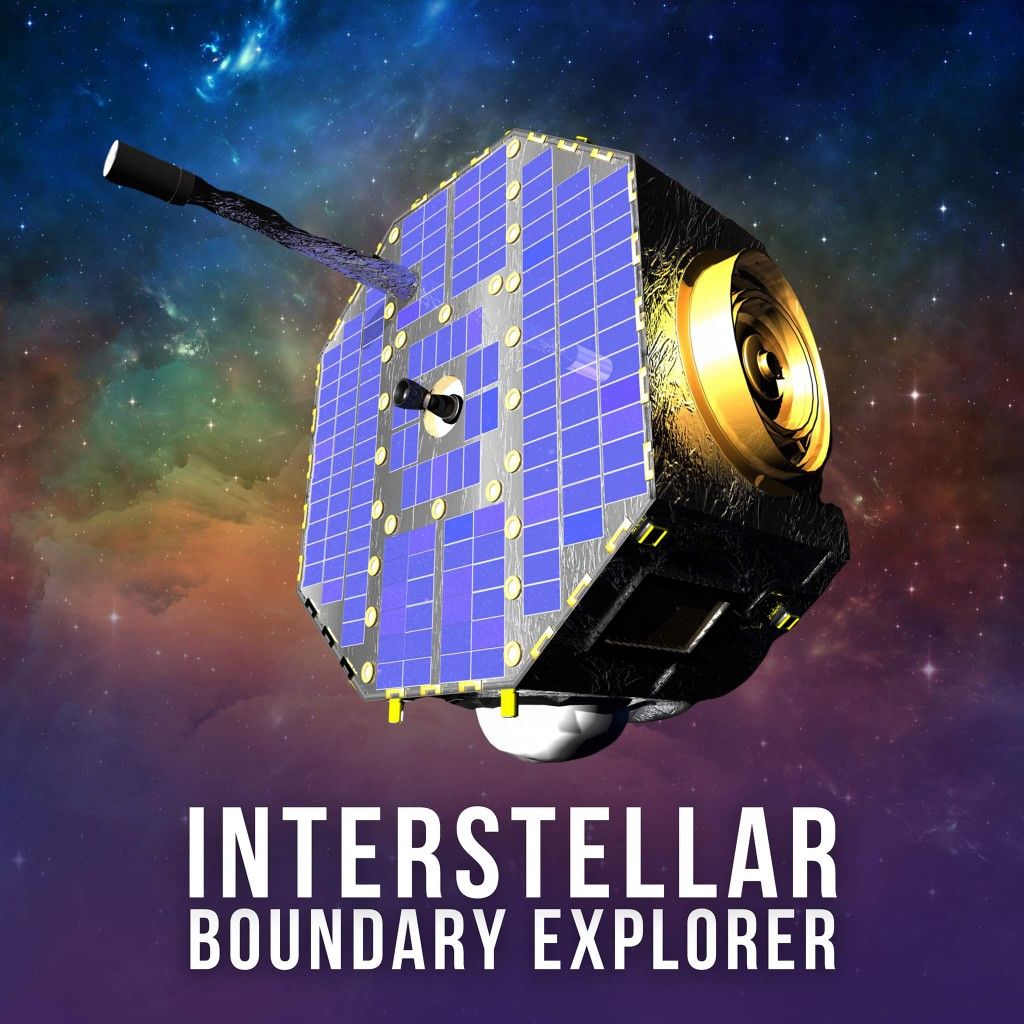
The launch of the IBEX probe was on October 19th of 2008 by a method that is more than a bit unusual for those of us who have been watching rocket launches since we were young. The spacecraft was first placed atop its Pegasus XL rocket, which was then suspended beneath NASA’s Stargazer L-1011 aircraft. The stargazer then flew to the island of Kwajalein in the Pacific near the equator. On the 19th the Stargazer took off from Kwajalein and the Pegasus rocket was launched from the aircraft in the same fashion as the old X-15 was launched from a B-52. The IBEX probe was placed into an extremely elliptical orbit of 86,000 kilometers perigee by 260,000 kilometers apogee. In this orbit the satellite is Sun oriented, in other words always able to keep the Sun in view.

IBEX makes its measurements by collecting Energetic Neutral Particles (ENPs) that are generated by the collisions between the solar wind and the ISM. On a average day IBEX detects about 600 particles but the greater the intensity of the solar wind the greater the number of ENPs.
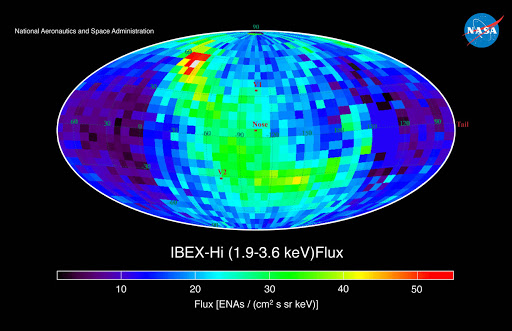
In this way IBEX can measure the size and shape of the Sun’s bubble in the same way that a dolphin uses sonar to ‘see’ what’s around it in the ocean. You see the intensity of the solar wind emitted by the Sun varies with time; IBEX then sees that same variation later in the ENPs it detects. The delay being two to six years depending on the energy of the particles and the direction IBEX is looking.
Now scientists working with IBEX at the Los Alamos National Labouratory have used that data to generate a three dimensional map of the heliosheath. At the same time the data also allowed them to calculate the speed with which the Sun’s bubble is moving through the local ISM to be 23.2 kilometers per second. The space probe has succeeded in making detailed measurements at immense distances about objects so faint that no human sense could even tell they existed.

All of which just shows that what we used to think of as ’empty space’ is a lot more dynamic, and a lot more interesting than we ever imagined it was back in the 1950s and 60s.
